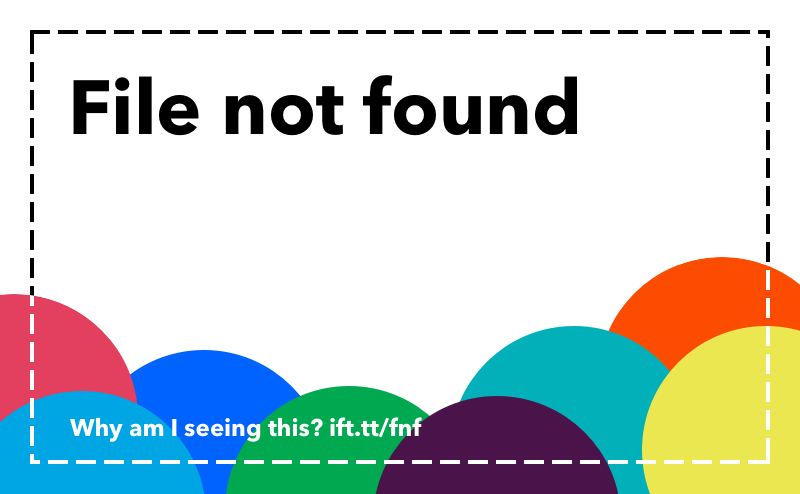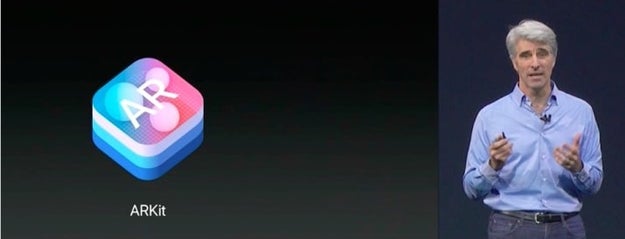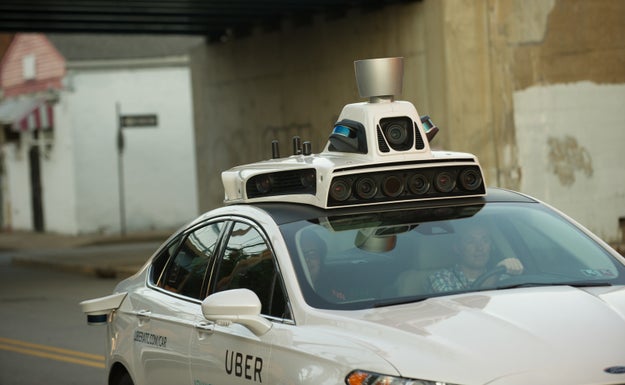
via FOX News http://ift.tt/2u7aBO5









Students at a high school in the NSW Hunter Valley are building and coding their own Mars rovers, and fostering an interest in STEM.



Minerva Studio / Getty Images
At the well-funded startup Omada Health, its coaches teach patients to prevent diabetes by eating better and exercising. They don’t meet face to face, but communicate over the internet — and the coaches are increasingly aided by a machine learning-powered software that provides cues for interacting with the patients.
Since the San Francisco company was founded in 2011, these coaches were a mix of full- and part-time staffers. But in November, it let go of all the part-timers and it instructed the remaining coaches to rely more on the software, the company told BuzzFeed News.
CEO Sean Duffy insists that his long-term goal isn’t to replace people with software. “The thesis is that we don’t think we’ll ever be at a point in Omada’s trajectory where we’ll ever take people or coaches out of the equation,” he told BuzzFeed News. “But they’ve got really smart systems to help them.”
Like many other tech-enabled health care services that connect patients with experts — coaches, therapists, nurses, doctors — over video chat, email, and text, Omada is trying to navigate a fundamental shift in labor. People are expensive, at least compared to automated, data-driven chatbots that could give advice and diagnose diseases without needing a salary or a college degree. But bots aren’t nearly as good at holding conversations, perceiving emotions and subtext, and delivering sensitive information like, say, a cancer diagnosis. If they want to grow, startups will have to figure out whether their patients and businesses alike will be best served by man, machine, or some blend of the two.
“There’s a spectrum of totally autonomous machine learning and the other side is totally human-driven,” said Mike McCormick, principal at Comet Labs, a venture capital firm that invests in artificial intelligence startups. “And then there’s every shade of gray in the middle of that.”
The previously unreported cuts at Omada last fall were small, and affected 10 to 12 part-time coaches, according to a spokesperson. It has about 60 to 70 full-time coaches and 250 employees overall. In another set of layoffs that Duffy said were unrelated, the startup also laid off roughly 20 workers last week, saying it “had to focus on Omada’s core business and expertise, while orienting the company for long-term success.” Omada has raised $125 million in venture capital, including $50 million this month in a round led by the health insurer Cigna.
“There’s a spectrum of totally autonomous machine learning and the other side is totally human-driven.”
Duffy said that as Omada has treated more patients and collected more of their data, it’s trained an algorithm to detect important behavioral changes. For example, if a person weighed in on a digital scale every day consistently, then stopped weighing in for three days, the system would flag the coach. It’d then “suggest messages they might send to a participant that might result in an outcome” — in this case, to find out how a person is doing and why they’re skipping weigh-ins, Duffy said.
The CEO was quick to note that the machine isn’t prewriting messages down to the word, but suggesting a gist to convey. He also said that users could tell when a nominally human-written message is computer-generated, and that this makes them lose trust in the system, Duffy said.
Coaches can also say no. “If we get enough coaches declining these suggestions and saying, ‘That violated my intuition as a human being,’ it trains the system to get better and better and give better and better suggestions,” he said.
The part-timers had access to this technology, but Duffy said that the company benefited more from having full-timers be constantly involved and invested in improving it.
Omada isn’t the only company exploring how to use artificial intelligence to improve health care. Startups like Babylon Health, HealthTap, and Remedy are developing chatbots to assess patients’ symptoms. Big Health has an entirely automated program called Sleepio, which stars a cartoon professor and is designed to help people with severe insomnia. But these nascent technologies are too new to definitively prove that machines can improve health more than humans can.
To survive, any kind of virtual health service will have to prove that it can get people to sign up, stay involved, and actually improve their health, said Liz Rockett, director of Kaiser Permanente Ventures, which has invested in both Omada and Big Health. “Doing the work of proving efficacy and reach is the best way to define that line of what works and what doesn’t – including on the question of using coaches in the delivery or having an all-virtual offering,” she wrote in an email to BuzzFeed News.
For now, there are way more people-to-people telemedicine services. Ginger.io initially tried to infer behavioral patterns and mental health problems from passively tracked smartphone data, but switched to a text and video-chat model with human therapists.
So in five to 10 years, will patients be more likely to interact with a human or a chatbot when they open up a health app? It’ll largely depend on how high-stakes the situation is, McCormick said. You’d want to hear that you have cancer from a trained expert with an extremely high degree of accuracy and emotional sensitivity. But for, say, nutrition coaching, he said, “maybe people are ready now. ...It has to be nuanced.”




Apple developers are already building experimental AR experiences for iOS 11 and some of them look lit AF.
AR, which stands for Augmented Reality, superimposes digital objects on the real world around you. Apple is building the tech into iOS 11, which will be available as a free download for most iPhones and iPads this fall.
BuzzFeed News
See how both the Pokémon and the ball look like they're bouncing on that stretch of real-world ground? That's essentially what AR looks like.
Apple
Apple





Jeff Swensen / Getty Images
Uber says the the engineer who until recently oversaw the company’s self-driving car project promised the company he would not bring proprietary information over from his former employer, new court documents filed Wednesday show.
The filings lay out a timeline as to which Uber employees knew about the actions of the company's former self-driving leader, Anthony Levandowski, who joined Uber after it acquired his autonomous truck startup Otto. Levandowski previously worked at Google's self-driving car program, which spun off into a new company under Alphabet, called Waymo. Waymo sued Uber in February, alleging that Levandowski stole its trade secrets, now benefitting Uber.
"No one at Uber ever asked Levandowski to download or take Google information or endorsed him doing so," Uber's attorneys wrote in a court filing. "In his employment agreement with Uber, Levandowski also agreed to “represent and
warrant to the Company that you have returned or destroyed all property and confidential information belonging to any prior employer.”
On Wednesday, Uber's lawyers said the lawsuit filing in February was the "first time that anyone at Uber learned that Levandowski may have engaged in improper downloading and theft of Google information as alleged by Waymo." Last week, a court filing revealed that Uber said Levandowski told Uber employees – including former chief executive Travis Kalanick, who resigned earlier this month – that he had found five discs containing Google information in his home. But Kalanick told him that Uber didn't want the Google information, and advised against bringing the discs to Uber, according to court documents. Levandowski later told Uber he had destroyed the discs.
Uber fired Levandowski in May. The company said that he had for months refused to comply with the its investigation into Waymo's claims. Levandowski has pleaded the Fifth Amendment in an effort to avoid incriminating himself should the case become a criminal matter. US District Judge William Alsup, the judge presiding over the case, referred it to federal prosecutors on May 11. Alsup said in a court order in May that Waymo's self-driving car secrets may have "seeped" into Uber's designs. Waymo has gone so far as to allege in court that Otto was founded as a ruse to help Uber steal its technology.
Throughout court proceedings, Uber has maintained that Waymo's information has not crossed into its systems. The ride-hail giant has called its own LiDAR systems – the self-driving technology at hand in the case – "fundamentally different" from Waymo's.
"Uber never used any Google trade secrets or patented technology in the development of
the technology at issue in this case," the ride-hail giant's lawyers wrote in a court document fled Wednesday. "No Uber employee is aware of Levandowski ever using any Google proprietary
information in the performance of his duties at Ottomotto or Uber."











Pool / Getty Images
The years-long legal saga involving a New York media company, a former professional wrestler, a sex tape and a Silicon Valley billionaire appears to be moving forward based on a U.S. bankruptcy court ruling on Wednesday.
New York-based bankruptcy judge Stuart Bernstein submitted an opinion that potentially allows for the estate of Gawker Media to explore — with limited scope — how venture capitalist Peter Thiel secretly funded lawsuits on behalf of wrestler Hulk Hogan. Wednesday’s ruling was seen as one of the last puzzle pieces in a bizarre case that some experts believe will have lasting implications on the rights of the free press in the United States.
Hulk Hogan began his legal battle against Gawker Media in 2012, after the organization's flagship site published a sex tape between the wrestler and his friend's wife. In May 2016, Forbes revealed that Thiel, who despised Gawker for writing about his sexual orientation, had been secretly footing Hogan's legal bills.
In his opinion, Judge Bernstein partially sided with the administrator of the Gawker estate, arguing that he had “shown good cause for the Thiel-related discovery.” However, previous settlement agreements between the Gawker estate, Thiel and Charles Harder — the lawyer who Thiel paid to represent Hogan in his invasion of privacy lawsuit against Gawker — ”impose substantial limitations” on what can be investigated, the judge said.
Last fall, Gawker — which declared bankruptcy and sold its assets to Univision after losing a lawsuit to Hogan — settled with the former professional wrestler for $31 million. In the wake of that settlement, Gawker's lead bankruptcy lawyer, Gregg Galardi asked the judge for permission to investigate Thiel for financing litigation for the sole purpose of putting Gawker out of business.
In an interview with The New York Times in May 2016, Thiel said of his financing of Hogan’s lawsuit against Gawker: “I would underscore that I don’t expect to make any money from this. This is not a business venture.”
A spokesperson for Thiel declined to comment on Wednesday. Galardi was not immediately available.
While Judge Bernstein allows of legal discovery in theory, his opinion notes that much of that potential investigation will be limited based on the scope of the settlement agreements between the Gawker estate, Hogan — whose real name is Terry Bollea, and his legal team. Part of the estate’s request was an investigation of any potential relationships between two other plaintiffs who sued Gawker and were represented by Harder: Shiva Ayyadurai, an entrepreneur who claims to have invented email despite evidence to the contrary, and writer Ashley Terrill who alleges the site “published a false and highly defamatory hit-piece" about her.
The Gawker estate has suggested that Thiel may have been involved in the financing of Ayyadurai’s and Terrill’s legal proceedings.
“It appears that the Plan Administrator cannot obtain any discovery from Thiel, Harder or anyone else regarding Bollea, Ayyadurai or Terrill except for discovery from Ayyadurai and Terrill limited to ‘litigation financing agreement(s) relating to the Lawsuit or claims in the lawsuit, and any non-privileged retainer agreements with Charles J. Harder, Esq. or the law firm of Harder Mirell & Abrams LLP relating to the Lawsuit or claims in the Lawsuit,’” wrote Bernstein.
Without a definitive ruling on the matter, Bernstein ultimately left the decision-making in the hands of the concerned parties, noting that they should meet to discuss matters on how to proceed. It’s unclear how the estate will continue from here.
William Holden, the bankruptcy plan administrator for Gawker, did not immediately return a request for comment.


